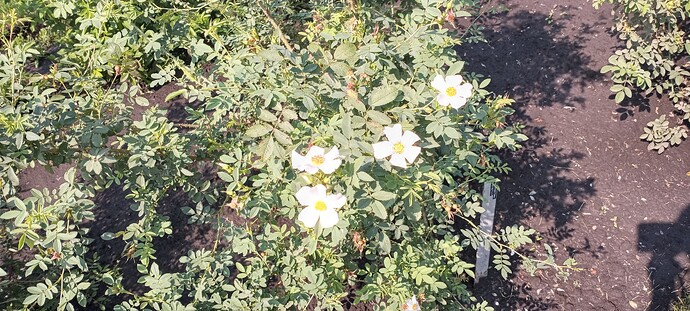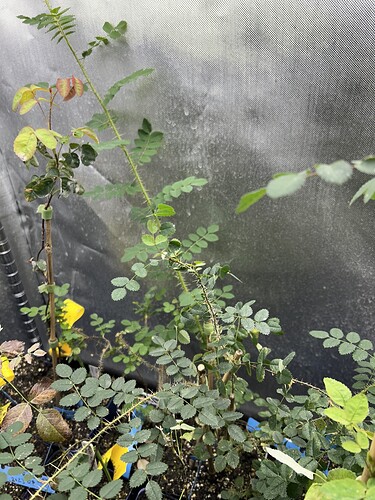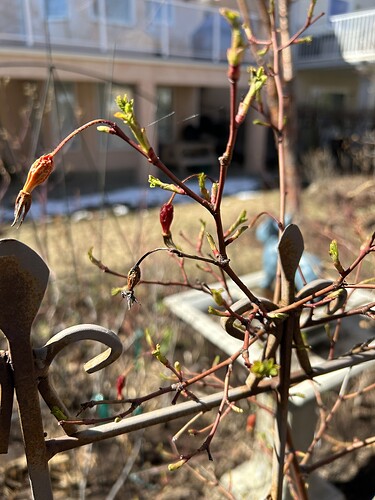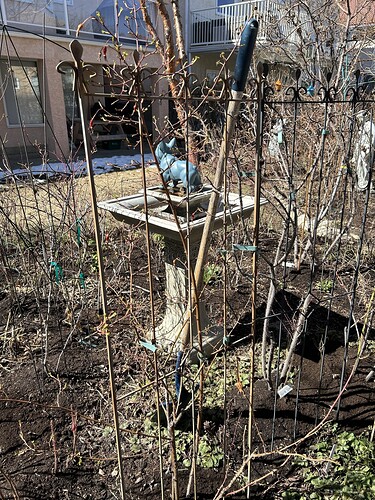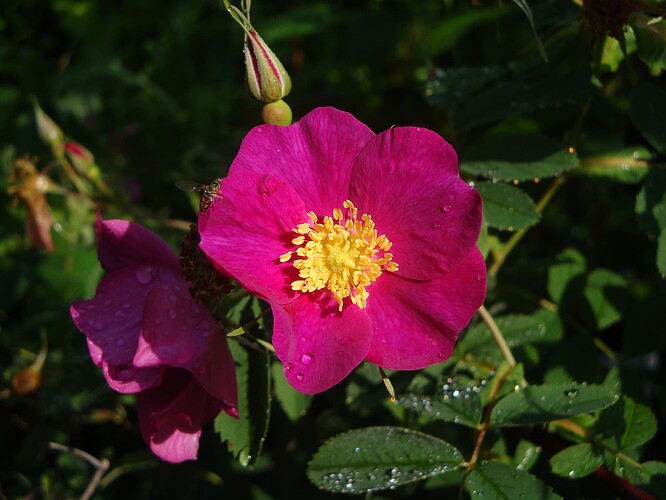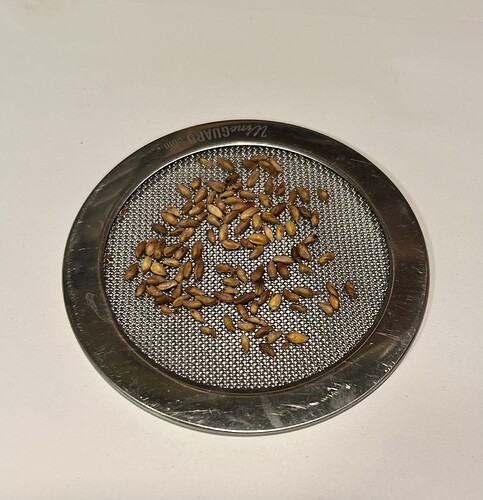Hi Stefan,
Txs for the feedback and experiences. l intend to use them for crossing if still around when they decide to bloom.
Margit maybe preoccupied, so what l think l know of the mother plant has been relayed to me, (never seen it) in that the seeds are from the most eye pleasing bush in an academic botanical garden collection.
There are apparently 3 bushes. And in terms of better science clarity, there is a shrub of Rosa laxa Retzius nearby that has canes that have penetrated into the R. berggeriana mother bush drip line. Not a root stock laxa. The risk, or benefit depending on your view, is obvious to me, a higher potential for cross pollination opportunities (what the talls and/or big leaf shorty seedling may owe to their height and /or leaf size ? … pure 13 week old conjecture for now).
Hardening off of the seedlings has been noted as likely going to have to be done in small progressives steps - based observations that in the less than 3 hours out of their incubation chamber youngest leaves showed pronounced wilting and shrivelling. Very humid in container and on purpose.
No sprays have been used over the last ~ 70-90 days. Only the “mosquito larvae” terminating “organic” fungus gnat pesticide granules and yellow sticky tape. Speaking of which replacing the original Cadillac ace granules has been a challenge - newer version not up to scratch - lower dose likely.
I have been pleased the seedlings have not been attacked (immune by hard climate? genetic selection?excess humidity?) by botyris, pm or spider mites which have been, and still are, ongoing issues depending on location on the time spectrum for the indoor season duration. These have plagued their neighbouring enclosed heated container of cuttings from various roses, and my own crosses that are in an open holder.
Though the plagues are declining in viciousness in latter roses as the days lengthen out. I have noted new healthier leaf node growth on the crosses (coming out of dormancy?).
End result for me? May finally have the white version of beggeriana that is speculated to be the cause of why a small flowered (but very tall) rambler thrives down to Zone 2 (the Polstjarnan ?cross? from Finland hybridized by Wasast-Järnan, in 1937).
And it took less than 100 years, and only slightly longer than for the obtaining of R laxa by me to at least acquire known building blocks for potentially hybridizing cane hardy Arctic ramblers/climbers/roses.
Good on the prairie pioneer hardy hydbridizers who succeed in a much smaller world of options.
![]()
P.S,
Forgot to mention, at my hobbyist collector’s rep peril, to credit and name drop, that got lucky and received a clone from the original Ross Rambler mother plant that was in the good doctor’s garden … another parent producing bone hardy roses (laxa I believe) … availability of raw material excuses gone, … except for my hybridizing skills may need severe burnishing up.
